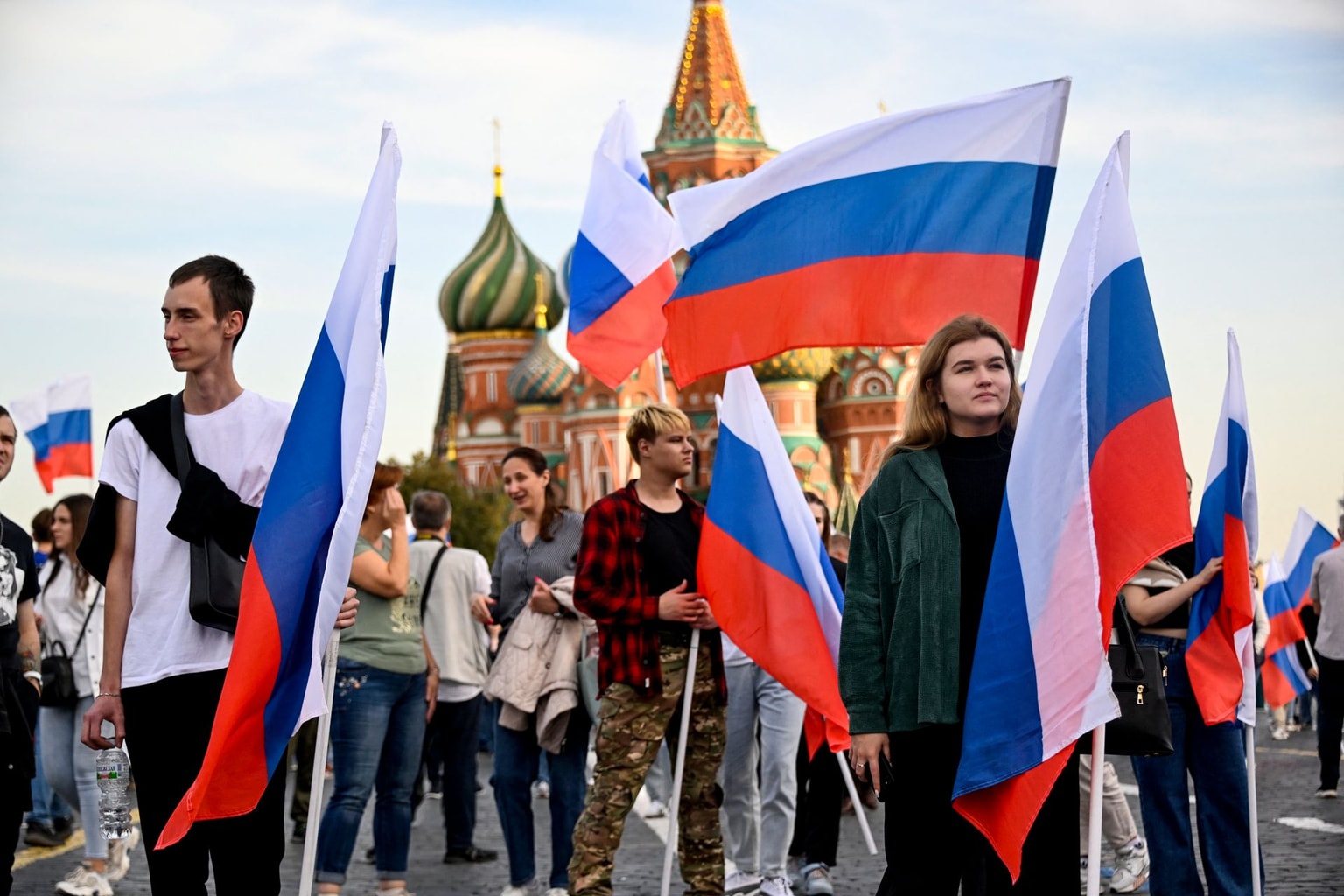
Deputy energy minister: How Ukraine’s energy infrastructure has endured over 1,000 attacks in 1,000 days of full-scale war
As Ukraine faces 1,000 days of full-scale war, the country braces for another winter, with Russia continuing its relentless efforts to plunge Ukraine into darkness while the energy system stands resilient and prepared.
An energy worker walks through a destroyed control room at a DTEK power plant in an undisclosed location in Ukraine on April 19, 2024, amid the Russian invasion of Ukraine. (Genya Savilov/AFP via Getty Images)
Over nearly 1,000 days of full-scale war, Russia has attacked Ukraine’s energy system more than 1,000 times. Despite this relentless onslaught, Ukrainian power engineers have achieved a historic feat: maintaining energy supply stability by repeatedly repairing equipment, sometimes three or four times after consecutive strikes.
This remarkable effort has not only ensured light and heat for Ukrainian homes but has also created a model of resilience and expertise that will be studied by future generations and international energy experts alike.
The energy system is stable and prepared for the heating season under normal conditions. However, one constant risk looms: massive Russian attacks on energy infrastructure. The only effective defense remains bolstering Ukraine’s air defenses.
Russia’s primary goal in targeting Ukraine’s energy infrastructure is to create social unrest and destabilize the nation’s rear by cutting off electricity and heating — critical for household comfort and economic stability.
Since 2022, the nature of these attacks has evolved. Early strikes reflected pre-war planning and Russia’s initial military strategy. Over the course of 2023 and 2024, however, the attacks grew more widespread and destructive, with Russia employing more advanced weapons.
This year alone, 9 GW of power generation capacity from thermal, combined heat and power, and hydro plants have been disabled. During the largest attack, on Aug. 26, 236 missiles and drones targeted Ukraine’s energy infrastructure. Russia used its most expensive weaponry, including ballistic missiles and cluster munitions valued at over $1 billion, damaging substations critical to nuclear power plants. The International Atomic Energy Agency (IAEA) has since expanded monitoring at these facilities.
In 2023, after extensive destruction, Ukraine began a robust repair campaign and received critical support from international partners. Spare parts from decommissioned European power plants, notably those supplied by Baltic nations, played a vital role in restoring operations quickly, as the production time for new equipment is lengthy.
The European Union Delegation to Ukraine launched a platform to provide surplus energy equipment from EU warehouses, offering essential short-term solutions. Additionally, electricity import capacity has increased from 200 MW to 1.7 GW, thanks to prolonged negotiations with EU governments and the G7. This milestone was reached just before the heating season commenced.
The foundation of Ukraine’s preparedness lies in the restoration of power generation and transmission equipment that could be brought back online before the heating season. This effort included the largest repair campaign in the history of independent Ukraine. Notably, our nuclear power plants (NPPs), which supply around 60% of the country’s electricity, are set to operate at full capacity this winter, with nine power units in operation in Ukraine-controlled areas — despite the Russian occupation of the Zaporizhzhia NPP, Europe’s largest nuclear plant.
A critical factor in meeting demand during the 2024/2025 heating season was the increase in electricity imports. Following assessments of the decisions made in 2023 and their effectiveness, as well as high-level negotiations with EU partners and the European Commission, we successfully raised our import capacity to 2.1 GW on a commercial basis, with an additional 250 MW available for emergency assistance.
While the Power System Integration Action Plan, adopted in 2019, outlined a five-year timeline for technical and legal measures to integrate Ukraine into the EU’s energy system, Ukraine has accelerated this process and is now de facto integrated, becoming a full member of the EU energy network.
Another vital component of our energy strategy is the expansion of distributed generation across the country. The government has created favorable conditions for this development, implementing key decisions to simplify construction and environmental regulations and streamline the process for connecting to electricity and gas networks.
Moreover, a series of financial measures have been introduced to support households, condominium associations (COAs), and public utilities in building their own generation facilities. These include interest-free loans for households and low-interest loans for utilities, as well as a zero-rate import duty and VAT on energy goods used for electricity generation. These measures have made it more affordable and efficient to purchase and install the necessary equipment without excessive bureaucracy.
In parallel, a collaborative initiative led by the Office of the President, Ministry of Energy, Ministry of Regional Development, and regional authorities is underway to develop “regional energy independence passports.” This effort will assess local energy consumption and identify the needs for backup power, particularly for critical infrastructure. It also takes into account changes in consumption patterns due to internal displacement, population migration, and damage caused by the war.
These passports will focus on the development of local gas and electricity networks, ensuring that solutions like solar panels, geothermal energy, wind power, and gas generation are tailored to the region's specific needs and climate conditions.
As a result of these efforts, we already see the technical conditions on connections to the network nearly 2 GW of new generation capacity is being commissioned, much of it driven by commercial and business interests. Simultaneously, international donors have provided local governments and utilities with a significant number of gas generators, cogeneration units, and mobile boiler houses to ensure backup power for critical infrastructure.
The success of distributed generation depends on a coordinated effort among local communities, regional administrations, national authorities, and energy companies. This integrated approach is key to ensuring economic independence for communities and fostering energy resilience.
Despite the challenges ahead, we have prepared for the 2024/25 heating season. Russia will persist in its efforts to plunge Ukraine into darkness and cold — as it did in its 10th mass attack on Ukraine’s energy infrastructure on Nov. 17 — but thanks to the tireless work of power engineers, the collaboration of central and local authorities, and unwavering international support, we are prepared to keep Ukrainian homes warm and well-lit throughout the winter.
Trust in the power engineers — they have done more than could have been imagined.
Editor’s Note: The opinions expressed in the op-ed section are those of the authors and do not necessarily reflect the views of the Kyiv Independent.










